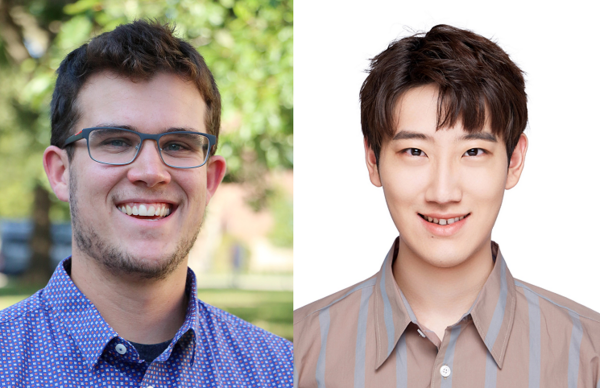
Special Seminar Speakers: CliMAS Graduate Students, Wenhan Tang and John Lundstrom
- Event Type
- Seminar/Symposium
- Sponsor
- Professor Deanna Hence
- Location
- 1 NOYES, Room 217
- Virtual
- Join online
- Date
- Apr 11, 2024 3:30 - 5:00 pm
- Views
- 74
John's Abstract:
The Practical Application of Atmospheric Tomography with 3D Radiative Transfer
Frequent global observations of cloud optical and microphysical properties distributed in 3D space are much sought after in a multitude of fields such as cloud physics, climate modeling, and numerical weather prediction. Current satellite remote sensing retrievals provide global and frequent observations of cloud optical depth and effective radius of the drop size distribution, however, the use of 1D radiative transfer in the interpretation of radiances leads to retrieval biases that depend on cloud regime and sun-view geometry. Moreover, retrieved quantities such as cloud droplet effective radius lack information of the in-cloud vertical structure of microphysics, which is highly desired for advancements in fields such as cloud physics. Recent developments in Atmospheric Tomography with 3D Radiative Transfer (AT3D) eliminate the bias caused by using 1D radiative transfer and retrieves the highly desired 3D distribution of cloud and aerosol microphysical and optical properties through multi-view angle observations. Previous investigations point toward the success of AT3D in cases where the traditional 1D radiative transfer approach suffers from greatest error such as in small heterogeneous clouds, although work thus far has been largely done in highly idealized synthetic environments. I demonstrate the practical application of AT3D to retrieve the 3D distribution of cloud volume extinction coefficient using observations from the Multi-angle Imaging SpectroRadiometer (MISR) that were coincident with the Cloud, Aerosol and Monsoon Processes Philippines Experiment (CAMP2Ex). Comparison of retrieved volume extinction coefficient against in situ observations from microphysics probes aboard the NASA P-3 aircraft during CAMP2Ex are presented as a form of validation indicating good results. However, there are several practical limitations when applying AT3D to real observations. One such limitation is from the imposition of radiative horizontal boundary conditions, and I explore this by characterizing retrieval error with respect to domain size through a set of simulations using synthetic cloud fields. This research will aid in the definition of requirements, such as satellite swath width, for future earth observing missions targeting clouds and aerosols.
Wenhan's Abstract:
Immersion freezing simulation of multi-species ice-nucleating particles using PartMC
Immersion freezing, initiated by an ice-nucleating particle (INP) in a supercooled aqueous droplet, has been recognized to play an important role in the formation of ice crystals within clouds. The efficiency of the ice nucleation process depends strongly on the chemical composition of the INPs. Furthermore, INPs can exhibit various mixing states, ranging from external mixtures to internal mixtures, with diverse distributions of chemical species across the particle population. Here, we investigate the impact of the aerosol mixing state on immersion freezing using the stochastic particle-resolved aerosol model (PartMC). We have extended PartMC with a time-dependent representation of immersion freezing based on the water activity-based immersion freezing model and generalized the freezing model’s formulation to calculate freezing rates of INPs that contain multiple species. An efficient algorithm, based on the binned tau-leaping method, has been developed to enable PartMC to simulate particle-resolved immersion freezing with enhanced computational speed while maintaining accuracy. We analytically derived the limiting behavior for the fraction of droplets that undergo immersion freezing when the INPs are internally mixed compared to externally mixed. The impact on the presence of different species on the frozen droplet fraction is explored through simulation. Our findings indicate distinctly different immersion freezing rates when considering internal and external particle mixtures, which is exacerbated when species with different freezing efficiencies are present.